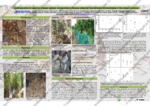Please use this identifier to cite or link to this item:
http://www.alice.cnptia.embrapa.br/alice/handle/doc/1004872Full metadata record
| DC Field | Value | Language |
|---|---|---|
| dc.contributor.author | MARTINEZ, M. G. | pt_BR |
| dc.contributor.author | CHALKIDIS, H. de M. | pt_BR |
| dc.contributor.author | MOURA, A. M. | pt_BR |
| dc.contributor.author | OLIVEIRA JUNIOR, R. C. de | pt_BR |
| dc.contributor.author | CAMARGO, P. B. | pt_BR |
| dc.date.accessioned | 2015-01-08T11:11:11Z | pt_BR |
| dc.date.available | 2015-01-08T11:11:11Z | pt_BR |
| dc.date.created | 2015-01-08 | pt_BR |
| dc.date.issued | 2014 | pt_BR |
| dc.identifier.citation | In: ECOLOGICAL SOCIETY OF AMERICA ANNUAL MEETING, 99., 2014, Sacramento. From Oceans to Mountains: It's All Ecology. [S.l.]: Ecological Society of America, 2014. | pt_BR |
| dc.identifier.uri | http://www.alice.cnptia.embrapa.br/alice/handle/doc/1004872 | pt_BR |
| dc.description | The Bothrops Atrox is little studied because it is sympatric to Amazonian animals. Very little is known about the ecology and natural history of this species. It has a generalist diet and the distribution of this species is very wide. The adults forage mostly on the ground, while the younger animals prefer to stay on the vegetation. They are easily found in the rainy months in areas near lakes or that are seasonally flooded and they are difficult to find in the driest months, a period when there is less availability of prey in these environments. Due to its aggressiveness it is considered one of the most feared snakes in South America and in the eastern Amazon, being responsible for the largest number of snakebites in the region. Through measuring stable isotope carbon-13 and nitrogen-15, it is intended to characterize the variations of the feeding habits of these collected animals in different environments and also when they are kept in captivity, (feeding the animal's bioterium). | pt_BR |
| dc.language.iso | eng | eng |
| dc.rights | openAccess | eng |
| dc.subject | Composição isotópica | pt_BR |
| dc.title | Bothrops atrox in captivity, change isotopic composition in tissues collected from different environments of the eastern Amazon. | pt_BR |
| dc.type | Resumo em anais e proceedings | pt_BR |
| dc.date.updated | 2016-11-30T11:11:11Z | pt_BR |
| dc.subject.thesagro | Animal | pt_BR |
| dc.subject.thesagro | Cobra | pt_BR |
| dc.subject.thesagro | Tecido | pt_BR |
| dc.subject.nalthesaurus | Amazonia | pt_BR |
| riaa.ainfo.id | 1004872 | pt_BR |
| riaa.ainfo.lastupdate | 2016-11-30 | pt_BR |
| dc.contributor.institution | Melissa Gaste Martinez, CENA/USP; Hipocrates de Menezes Chalkidis, Integrated College Tapajós; Ana Maria Moura, INSTITUTO BUTANTÃ; RAIMUNDO COSME DE OLIVEIRA JUNIOR, CPATU; Plinio B. Camargo, CENA/USP. | pt_BR |
| Appears in Collections: | Resumo em anais de congresso (CPATU)  | |
Files in This Item:
| File | Description | Size | Format | |
|---|---|---|---|---|
| 265831369.pdf | 3.45 MB | Adobe PDF |  View/Open |









